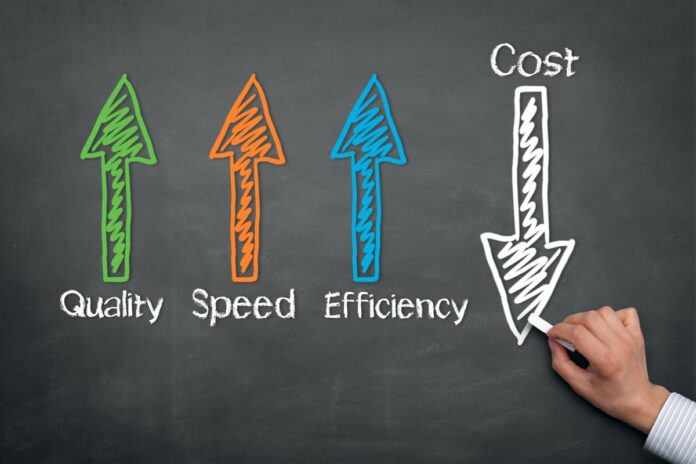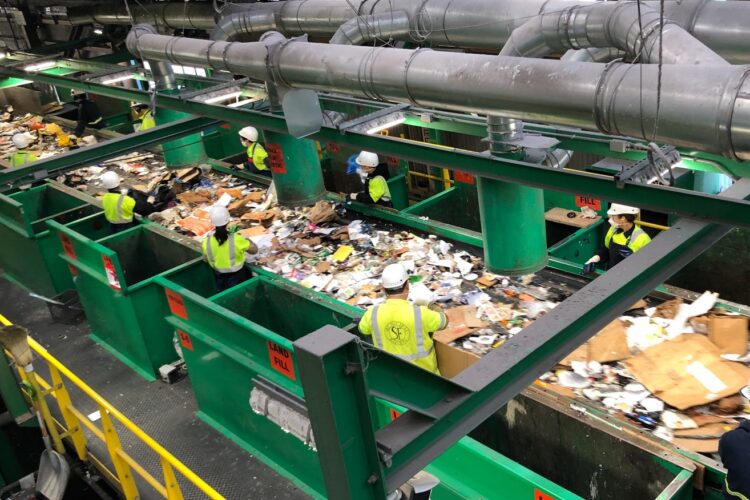
No matter what kind of business it is that you’re running, being productive and efficient is very important for your overall progress. Ever since people started manufacturing things, their only goal is to create more by spending less, which is basically what efficiency means. We care about all of our readers, so we would be more than happy to see you all succeed, which is one of the reasons why we decided to create this article.
Today, we’re going to talk about the five best ways how you can improve your manufacturing efficiency, so if you currently happen to be struggling with something like this, or you’re just curious to learn some more on this subject, feel free to continue reading until the end.
We’re going to cover many things such as cutting costs, utilizing your budget more efficiently, and most importantly, how to do all of this while reducing the environmental impact. Since there’s a lot to talk about, and it’s a pretty serious subject as well, let’s end this introduction right here and take a look at what you need to know.
1. Adapt your designs to spend less

No matter what it is that you’re manufacturing, it’s important to adapt your designs to maximize the usage of all materials. For example, if you’re using wooden boards in the form of a rectangle, but you’re cutting circles in them, some parts of the board will not be used, and they’ll most likely end up being wasted. This is a very basic example, but what we’re trying to say is that your designs should be perfectly “aligned” with the manufacturing supplies that you’re receiving so that you can use everything for maximum efficiency.
There are only two ways to make sure that what you’re getting as a return for your products is enough. The first way is to be very efficient with your designs so that you use the most materials possible while minimizing the number of unused resources, and that’s the right way. The second way is to increase the price of your products up to an unrealistic point, to justify your “un-optimized” product designs. This will hurt your business in the long run, which is why we feel like you should be adapting the first method and perfecting it.
2. Make sure to recycle

If what we wrote above doesn’t work for you out of some reason, then the next step is to implement recycling. This is a very important thing for our environment no matter what you’re working with, so if possible, try to recycle the materials that are left unused. You can either use the remains to create other products or for the same product, but that’s not possible in every situation. A great place to start learning some more about automated systems & inspection is innovativeengineeredsolutions.com.
Recycling gives you the eco-stamp as well, making your business more investment-friendly. Going green is very important in 2025. For those of you who don’t know, your unused materials can be sold at a factory to get some of your money back. Every penny counts, especially if you are a smaller business or an enterprise.
3. Think of a way to use the scraps

Your scrapped materials don’t have to end up in the garbage bin. As we said above, you can either recycle them or even better, find a way to create other products, and maximize your profit. You’ll probably have to invest in a few other machines because adjusting your main ones is not practical and efficient, but if you manage to find a way to use 100% of your resources, your efficiency will spike by a lot.
Of course, this will most likely depend on the type of business that you have, so either recycling or using the scraps is a viable option. Make sure to do the math and find out which one will yield more profit and efficiency. If you cannot do either one, selling all of your unused materials to a factory that recycles is always a great idea. This way you can get some of your money back and invest in new materials.
4. Collaborate with quality suppliers

There are many reasons why you should collaborate only with quality suppliers, and believe it or not, this has an impact on your efficiency as well. How? Well, if you often find yourself in a situation where half of the materials that you’ve ordered are unusable due to the condition in which they’re in upon arriving, it means that you’re not utilizing your business to its fullest potential. If everything that you order is completely usable and of high quality, you can create more products, sell more and at the end of the day make a lot more profit.
For instance, when it comes to the food and beverage industry, using high-quality materials is crucial to maintain sanitary conditions and ensure the safety of your products. Search for information about elastomers from csidesigns.com and find reliable and top-notch materials to ensure that your production process runs smoothly and efficiently. Collaborating with suppliers that provide high-quality products can help take your business to the next level.
On top of all this, you should present your competition for the rest of your crew members.
By knowing who you’re going against and what the current standards for quality are at the moment, you’ll make the entire thing a much more competitive environment, and competition is always great for success.
5. Track progress and engage your employees

Last but not least, even though you might be a business owner, the outcome of your company will always depend on your employees. This is why it’s so important to constantly monitor their progress and engage them in activities that have only one goal, and that’s increased efficiency and productivity. If you educate your employees and carefully explain to them all of the modern methods that you’ve come up with, you’ll see much better progress compared to any of the other methods mentioned above.
Host seminars, meetings, and provide useful content that can point all of your workers in the right direction. Training programs are a great thing as well. They might be costly, but the return on investment is a lot higher. Confusion and downtime are counter-productive things, so make sure that your employees never find themselves in a situation where they’re not sure what the next step should be.











